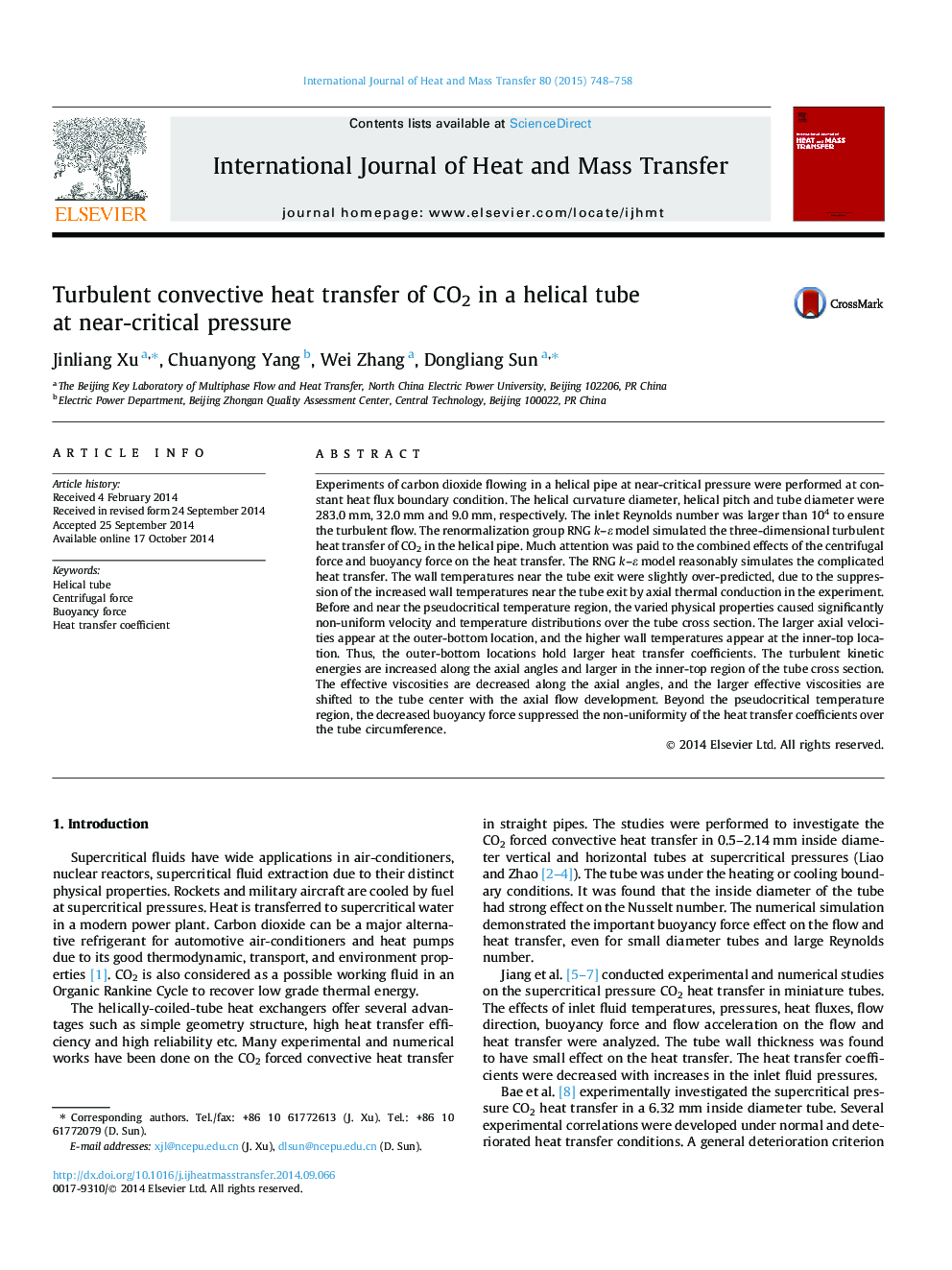| Article ID | Journal | Published Year | Pages | File Type |
|---|---|---|---|---|
| 657307 | International Journal of Heat and Mass Transfer | 2015 | 11 Pages |
Experiments of carbon dioxide flowing in a helical pipe at near-critical pressure were performed at constant heat flux boundary condition. The helical curvature diameter, helical pitch and tube diameter were 283.0 mm, 32.0 mm and 9.0 mm, respectively. The inlet Reynolds number was larger than 104 to ensure the turbulent flow. The renormalization group RNG k–ε model simulated the three-dimensional turbulent heat transfer of CO2 in the helical pipe. Much attention was paid to the combined effects of the centrifugal force and buoyancy force on the heat transfer. The RNG k–ε model reasonably simulates the complicated heat transfer. The wall temperatures near the tube exit were slightly over-predicted, due to the suppression of the increased wall temperatures near the tube exit by axial thermal conduction in the experiment. Before and near the pseudocritical temperature region, the varied physical properties caused significantly non-uniform velocity and temperature distributions over the tube cross section. The larger axial velocities appear at the outer-bottom location, and the higher wall temperatures appear at the inner-top location. Thus, the outer-bottom locations hold larger heat transfer coefficients. The turbulent kinetic energies are increased along the axial angles and larger in the inner-top region of the tube cross section. The effective viscosities are decreased along the axial angles, and the larger effective viscosities are shifted to the tube center with the axial flow development. Beyond the pseudocritical temperature region, the decreased buoyancy force suppressed the non-uniformity of the heat transfer coefficients over the tube circumference.
